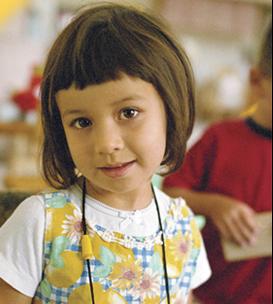by Neva Fenno, M.S.Ed., MLIS
I’m about to stick my toe into murky waters, but it seems fitting just after Halloween.
Any discussion of special education must begin with a true understanding of the enormity of the subject. I could write blog posts about it every day for the rest of my life and never run out of subjects to explore, so bear with me while I explore a non-scientific corner.
I’m a big fan of Stephen King, especially his early books like The Stand, Carrie, Christine, etc. He is a master storyteller and reading one of his books is most often a rewarding experience.
In 2002, he wrote a television miniseries called Rose Red. It’s about a psychology professor who takes a group of psychically talented people to a haunted house in Seattle. If you picture House on Haunted Hill, that’s a good place to start, but Rose Red is in a category all its own.
In the story, Annie, a 15-year-old autistic and psychic girl, is brought along to ignite the house’s dormant ghosts into action. She is reported to have telekinetic and telepathic abilities that will be sure to help the professor establish her assertions that haunting does happen and the unseen world is rich with research possibilities. Early in the story, it’s clear that Annie does have amazing abilities to make connections with the unseen world. Strange things begin to happen, too numerous to mention here.
There has long been a school of thought in the study of autism that people on the spectrum have a connection with the paranormal that others lack. The Internet is loaded with sites that try to establish this connection. Whether you believe in ghosts or not, you can see the dangers that lie in the path of this kind of thinking. Has anyone ever really proven that ghosts exist? Why haven’t searchers been able to document their existence (on film, etc.) other than seeing shadows and hearing doors close on their own? Those are just a couple of the dangers.
The other greater problem is the need to put people in groups so we can describe them. Like all autistic children, Annie is an individual; her social interaction and communication challenges lie on a spectrum. In deference to Mr. King, he is merely trying to move a fiction forward in an entertaining and hopefully believable way. He respects Annie’s theoretical abilities and does little damage to the field of education or psychology, but it’s with a wink and a nod.
For teachers, it’s in our best interest to be sure that people don’t grab on to theories like these and try to use them to bolster personal beliefs. We can all agree that these beliefs are a private matter and deserve respect. However, discussions about autism must stay on a track that is proven and scientifically determined. How else can we provide kids with a great education?
Likewise, are children with developmental disabilities really more affectionate and loving than other children? (This is a stereotype I’ve encountered.)
Annie ends up saving the day, of course, releasing the trapped paranormal investigators from a house that has taken on a malevolent life of its own. We are entertained, and reminded of the literary skills of Stephen King; he has done it again, brought us through a complex story to a satisfying conclusion. We can turn off the TV and return to our scientific reality.
I’ve made a list of some websites that explore the idea that autistic children may have psychic talents. I tried to stay with credible source material, but that’s becoming more difficult too.
“Are Autistic and Psychic People Similar?” – Psychology Today
Research? (Question mark mine)
Indigo Children – ABC News Report
Once again, I could write much more on this topic. I hope you will forgive my flight into fuzzy territory, as it relates to special education. Tell me your stories of stereotype busting.
Grant Name: Educational Grants
Funded By: The Ambrose Monell Foundation
Description: Giving on a national basis to improve the physical, mental, and moral condition of humanity throughout the world. Giving largely for hospitals and health services, scientific research, museums, performing arts, and other cultural activities, and higher and secondary education; support also for social services, research in political science, mental health, and aid to the handicapped. No grants to individuals.
Program Areas: Adult Literacy, Disabilities, General Education, Health/PE, Math, Reading, Science/Environmental, Social Studies, STEM (Science, Technology, Engineering, Math)
Eligibility: Public School, Private School, Higher Education, Other
Proposal Deadline: 4/30/2015
Annual Total Amount: $9,000,000.00
Average Amount: $5,000.00 – $100,000.00
Address: c/o Fulton, Rowe, & Hart, 1 Rockefeller Plz., Ste. 301, New York, NY 10020-2002
Telephone: 212-245-1863
E-mail: info@monellvetlesen.org
Website: The Ambrose Monell Foundation
Availability: All States




